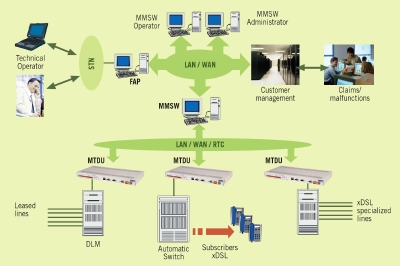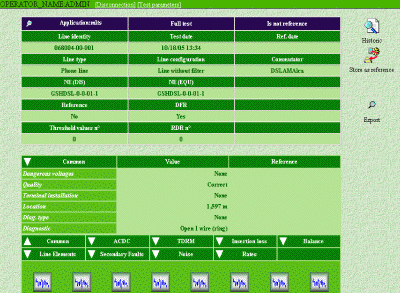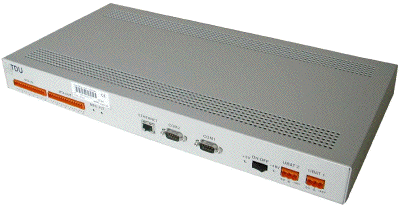| Maestro | ||
Subscriber Line Test System (SLTS)
Main FunctionsThe Maestro line test system can be used either for monitoring copper pair networks for telephone services (narrow band) or for services based on xDSL (broadband) technologies. The Maestro system is ideal for qualifiying lines handling POTS, ISDN, HDSL, HDSL-2, G.Lite, G.SHDSL and ADSL, VDSL services. Using AC/DC and/or echometric measurements, it enables operators to:

Service TestingIn addition to the qualitiy of copper lines the topic service testing gains more priority. The Maestro system is able to measure important parameters related to availability and service quality. Not only parameters of the DSL line are detected, but also characteristics of an Internet access (e.g. PPPoE, DNS) and quality parameters of VoIP and IPTV. Thus you can reach more service availability and fast troubleshooting. VIERLING plans to upgrade Maestro with an additional service testing functionality. The system will be able to measure parameters such as the data rates in the upstream and downstream and the ATM connection parameters (including VPI/VCI). The system will also support tests of VoIP and video service quality. ArchitectureThe Maestro line test system is built around three components:
ModularityMaestro has got the necessary adaptability to support all kinds of networks to be monitored. The number of lines, structure, required performance level, characteristics of the Local Exchanges (manufacturer, hardware, software), are all parameters taken into consideration when Maestro is incorporated into the network. 
"Universality"The MTDU is a Test Head that can be adapted to any configuration. It can be connected to a Local Exchange, to a DSLAM (Digital Subscriber Line Access Module), to a matrix (like the MMTA matrix, MAX HD), or to a DLM for leased lines. Open ArchitectureIf operators use Customers' Operational Support Systems (OSS), whether proprietary or a package, Maestro can be easily and quickly combined with them through supplied programming interfaces (API), thus offering a complete and effective application-tailored solution. In addition, the MMSW Management Software is built on a Client/Server model. It has the necessary modularity for distributing logic services on various machines (distributed architecture). Its development using Java makes it portable to any platform having a JRE 1.3 engine, in particular Windows 2000, XP and Linux. | ||